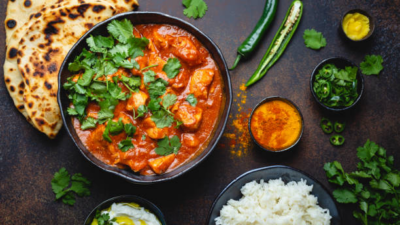India, often referred to as the “Land of Spices,” boasts a rich culinary heritage that is intertwined with a colorful tapestry of aromatic spices. These spices not only add depth and flavor to Indian cuisine but also have a fascinating history and cultural significance. Join us on a flavorful adventure as we explore some of the most beloved spices from this enchanting country.
1. Turmeric – The Golden Jewel
Our journey begins with the bright and sunny turmeric, often called the “golden spice” of India. This vibrant spice is not only famous for its earthy flavor but also for its incredible health benefits. Turmeric’s active compound, curcumin, has anti-inflammatory and antioxidant properties that make it a staple in traditional Indian medicine. While it is one of the most common Indian spices in kitchens across the country, it is also used in making salves to heal wounds, and as a natural remedy for a range of skin ailments.
- Cumin – The Mistress of Earthy Aromatics
Next up is cumin, a beloved seasoning that fills the air with its earthy, nutty fragrance. As one of the most crucial Indian spices in many preparations across the country, Cumin lends a warm and aromatic quality to any dish it is added to, and acts as a digestive aide to the rich flavours of Indian cuisine. Cumin seeds are toasted before use to unlock their full flavor potential.
- Coriander – The Fresh and Citrusy Herb
Coriander, known most commonly as Kothmir, Malli, Kothmalli,or Dhania, is aone of the most versatile Indian spices and is used both as seeds and fresh leaves . Its seeds have a slightly citrusy flavor, while the leaves provide a refreshing contrast in dishes like chutneys and curries.
- Cardamom – The Queen of Spices
Cardamom often referred to as the “queen of Indian spices,” is prized for its sweet, floral notes. It’s used to flavor both sweet and savory dishes and plays a significant role in Indian desserts like kheer and gulab jamun. A cup of cardamom-infused chai is a sensory delight!
- Cloves – The Pungent Buds
The small but mighty cloves is an irrepaceable ingredient in any Indian spice cabinet. These dried flower buds have a strong, sweet-spicy flavour and are often used to add depth to biryanis and masalas. They also have a history of medicinal use due to their anti-oxidant, and antibacterial properties.
- Fenugreek – The Bitter-Sweet Twist
Fenugreek, or Methi, brings a unique, slightly bitter-sweet flavor to Indian cuisine. Its leaves, seeds, and dried leaves (kasuri methi) are all used in a variety of dishes, making it one of the most versatile Indian spices. It is most commonly used in North Indian recipes and is an essential part of spice blends like garam masala. It also helps in digestion and is often used to undercut the richness of Indian flavours.
- Mustard Seeds – The Tangy Crunch
Mustard seeds, whether black, brown, or yellow, add a delightful tangy crunch to Indian pickles and curries. The tempering of mustard seeds in hot oil releases their pungent aroma and enhances the overall taste of the dish. In Eastern India, Mustard is often used as a paste that lends it’s pungent flavour to any dish it is added to.
- Red Chilies – The Fiery Heat
For those seeking a fiery adventure, Indian cuisine offers an array of chili peppers with varying degrees of heat to make sure your preparation packs a punch. Whether it’s the Bhutjholokia chilli of the Northeast, or the beloved Kandhari of the South, used either as red chili powder or as scorching green chilies, these spices add a fiery kick to every dish they are added to.
- Asafoetida – The Unique Umami
Asafoetida, often called “hing,” is one of the most important Indian spices and has a strong, pungent aroma that mellows out when cooked. It’s used sparingly to enhance the umami flavor in vegetarian dishes and lentil-based gravies. It also helps the body absorb the required nutrients from these dishes, by breaking them down and helping in digestion.
- Curry Leaves – The Fragrant Garnish
Our journey across Indian spices ends with curry leaves. Not to be confused with curry powder, these aromatic leaves are used as a fragrant garnish, adding a citrusy, herbal note to South Indian curries, rice dishes, and chutneys. Ric in calciumm, fibre and vitamins A,C, and E, it is believed that curry leaves also have cooling properties that combat the tropcal heat of the South.
Also see: Breaking Bread: Indian Breads and Their Savory Companions
In conclusion, the spices of India are not just ingredients; they are storytellers, reflecting centuries of culinary evolution and cultural diversity. They transform ordinary ingredients into extraordinary dishes, making Indian cuisine a thrilling adventure for the senses. So, the next time you savor the flavors of India, remember the spices that make it all possible – each one a small but essential piece of this flavorful puzzle.
















[…] Also read- 10 Zesty of Indian Spices: From Cuisine to Culture […]
[…] Also read- 10 Zesty of Indian Spices: From Cuisine to Culture […]